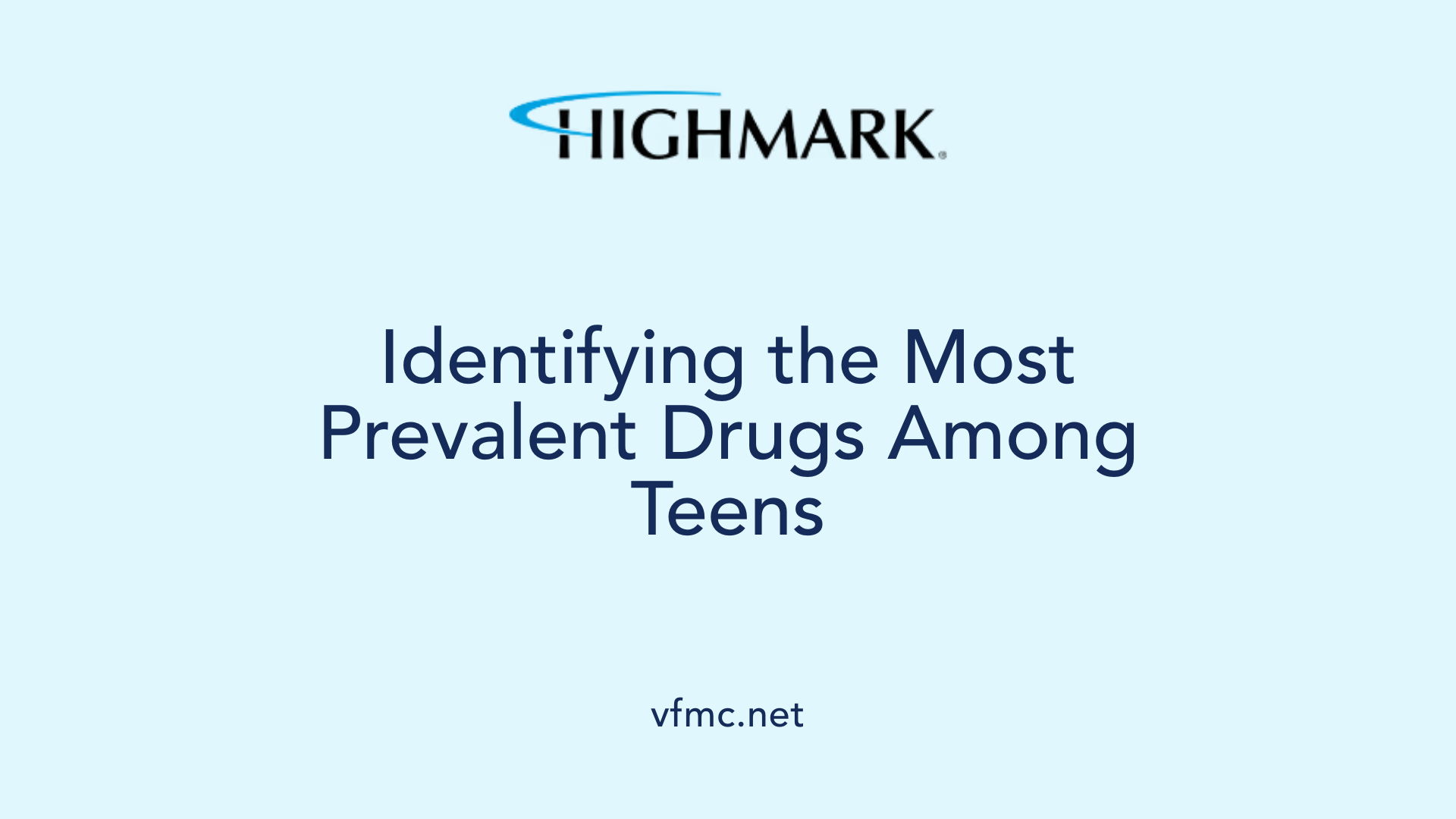
Understanding Teen Substance Use Trends
The teenage years are a period of exploration and experimentation, and substance use is no exception. This article dissects the current state of drug and alcohol use among teenagers in the U.S., drawing from recent surveys and studies to provide insights into prevalent substances, trends over time, and the implications for adolescent health and social wellbeing. The discussion also considers how external factors such as the COVID-19 pandemic have influenced these patterns.
Prevalence and Trends in Teen Substance Use

What are the latest statistics on drug abuse in 2024?
As of 2024, the statistics surrounding drug abuse among teenagers are striking and concerning. Approximately 1 in 8 teenagers, or 12.5%, reported abusing an illicit substance within the past year, highlighting the ongoing prevalence of substance misuse in this demographic. The Monitoring the Future survey indicates that 10.9% of eighth graders, 19.8% of tenth graders, and 31.2% of twelfth graders used any illicit drugs in the past year, remaining below pre-pandemic levels
Trends over the last few years
The trends observed over the past few years show a mixed picture. Data from the 2016-2020 period revealed a 61% increase in drug use among eighth graders, raising alarms about early drug experimentation. However, recent figures from 2023 indicate alcohol misuse among 12th graders declined from 51.9% in 2022 to 45.7%, suggesting a potential shift in attitudes toward alcohol.
Interestingly, cannabis use among youths has remained stable, with 8.3% of eighth graders and 29% of twelfth graders reporting use in the past year. The vaping trend also saw a decline, particularly among 10th (from 20.5% to 17.6%) and 12th graders (from 27.3% to 23.2%).
Overall, while some areas reflect positive changes, ongoing risks and the need for intervention remain critical as teenagers navigate these substance use issues.
Substance Specific Use Among High School Seniors

Use of Various Substances by High School Seniors
Recent statistics reveal concerning trends regarding substance use among high school seniors. According to a 2023 survey, 11.5% of high school seniors reported using any illicit drug, excluding marijuana, over the past year. Among their peers, 22.3% reported marijuana use in the past month, underscoring its prevalence in this age group.
Recent Trends in Consumption
The use of other substances also raises alarms. Nearly 29.3% of high school seniors reported consuming alcohol within the last month, which continues to mark alcohol as the most commonly abused substance among teens. Additionally, 14.0% of seniors vaped marijuana, while 25.5% vaped nicotine. Usage rates for illicit drugs extended to 4.5% reporting amphetamine use and 2.2% using cocaine within the same timeframe.
This data paints a vivid picture of substance use among high school seniors, highlighting the critical need for sustained awareness and prevention efforts in adolescent health initiatives.
Most Commonly Used Substances

Which drug is the most commonly used among teens?
The most commonly used drug among teens is marijuana, which often leads to cannabis use disorder. Recent statistics reveal that in the past year, about 29% of 12th graders, 18% of 10th graders, and 8% of 8th graders reported using marijuana. Beyond cannabis, 46.6% of teens by their senior year have experimented with various illicit drugs, including prescription amphetamines such as Adderall, synthetic marijuana (Spice/K2), and prescription painkillers like Vicodin.
Other prevalent substances include DXM cough syrup, sedatives like Xanax, hallucinogens, MDMA (Ecstasy), salvia, and inhalants. Alarmingly, around 2.08 million teens reported drug use in the last month, highlighting significant engagement with illicit substances.
What drives teenage drug use?
Reasons behind this drug use often stem from various social and emotional factors. Many teens cite the desire to fit in with peers, seek pleasure, and cope with emotional or psychological challenges. This complex interplay of social influences and personal experiences contributes to the rising trends in substance use among adolescents. With 86% of teenagers knowing someone who drinks, smokes, or abuses drugs during school, the normalization of substance use in their environment further exacerbates the issue.
Health and Social Consequences of Substance Use

What are the health risks and social concerns associated with teen substance abuse?
Teen substance abuse poses significant health risks that can affect both physical and mental well-being. Healthy brain development is jeopardized, particularly through the consumption of alcohol and marijuana. Early exposure to these substances can lead to cognitive impairments and increased susceptibility to developing substance use disorders later in life. This is particularly alarming considering that about 8.7% of eighth graders reported using illicit drugs in the last month, signaling a worrying trend in early experimentation.
Socially, substance use correlates with a variety of risky behaviors. Teens who misuse drugs are more likely to experience issues such as violence, including dating violence, and may engage in unsafe sexual practices. For instance, 86% of teens know someone who drinks, smokes, or uses drugs at school, indicating that substance use is alarmingly normalized in adolescent environments.
Despite promising signs of stabilized or declining overall drug use, the alarming rise in overdose deaths—especially those involving fentanyl—signals a growing health concern. Nearly 11.2% of all overdose deaths in the U.S. were among young individuals aged 15-24, underscoring the urgent need for effective prevention and treatment strategies. Addressing these issues comprehensively involves fostering strong decision-making skills among youth and engaging families in the conversation to curtail these risks.
Impact of the COVID-19 Pandemic

What impact has the COVID-19 pandemic had on teen drug usage behaviors?
The COVID-19 pandemic has impacted teen drug usage behaviors considerably, leading to a notable decline in reported illicit substance use. In 2023, statistics revealed that only 10.9% of eighth graders, 19.8% of tenth graders, and 31.2% of twelfth graders reported using any illicit substances. This marks a significant drop and indicates that current usage levels are the lowest they have been in decades.
Changes in teen substance use during the pandemic
While the overall rates of alcohol consumption and nicotine vaping among teens have also seen a decrease, there remains a shifting trend where interest in substances such as cannabis and psychedelics appears to be gaining traction, particularly among Gen Z. Increased media coverage of overdose risks—especially those associated with fentanyl—has resulted in heightened awareness of these dangers among adolescents. The pandemic has highlighted the serious health risks that accompany drug use, making prevention programs more vital than ever.
Long-term effects
Despite the decrease in substance use, the conditions stemming from the pandemic emphasize the need for effective education and prevention strategies. As substance use rates fall, the importance of addressing associated risks, particularly vulnerabilities to drug contamination and overdoses, cannot be overlooked. Future prevention efforts must ensure that these insights foster healthier environments for youth, steering them away from potential pitfalls associated with substance use.
Demographic Insights into Teen Drug Use
Variation in drug use across demographics
Teen drug use is markedly varied across different demographics. Reported usage rates show that by the end of high school,
- 46.6% of teens have tried illicit drugs
- 50% of teenagers have misused a drug at least once during their lifetime.
Recent surveys indicate that 8.3% of eighth graders, 17.8% of tenth graders, and 29% of twelfth graders have used cannabis in the past year, reflecting a stable trend in marijuana use.
Moreover, 62% of 12th graders report having abused alcohol, reinforcing its position as the most commonly abused substance among teens. However, the decline in alcohol use—from 51.9% in 2022 to 45.7% in 2023 among seniors—signals a shift that merits attention.
Comorbid factors
Several factors contribute to the prevalence of drug use among teenagers. Notably, a significant 86% report knowing someone who drinks or uses drugs at school. The health implications are severe, with 11.2% of overdose deaths in the U.S affecting those aged 15 to 24 years, underscoring the link between substance misuse and heightened vulnerability. Moreover, 1.3 million adolescents between the ages of 12 and 17 require treatment for substance misuse, yet only 10% receive the necessary care. This gap in treatment access points to the urgent need for supportive measures in addressing teen substance abuse.
Prevention and Treatment Efforts
Current strategies for prevention
Prevention efforts to combat teen substance abuse focus primarily on education, community engagement, and parental involvement. Schools are implementing programs that educate students about the dangers of drug use and promote healthy decision-making. Peer-led initiatives have also emerged, wherein older students guide their younger counterparts on resisting peer pressure.
Additionally, multimedia campaigns are targeting teens through social media and online platforms, spreading awareness about the risks associated with drug use. These campaigns often feature testimonials from peers and educational content designed to resonate with teenagers.
Challenges in treatment access
Access to treatment for teens facing substance use issues remains a significant challenge. Studies reveal that while 1.3 million adolescents need treatment for substance abuse problems, only 10% receive the necessary help. Barriers include stigma, lack of insurance coverage, and a shortage of specialized adolescent treatment programs.
Furthermore, only 19.3% of those with a substance use disorder receive treatment, indicating a vast gap in care. Overcoming these challenges requires more efforts toward improving accessibility and reducing the stigma around seeking help for substance use issues.
Emerging Substance Use Patterns
New drugs and substances among teens
Recent research reveals a concerning trend in substance use among adolescents, particularly with newly emerging substances like Delta-8-THC. In 2023, 11.4% of 12th graders reported using Delta-8-THC, highlighting a shift in the types of substances being experimented with. This shift may be linked to increased accessibility and changing perceptions of cannabis-related products following legalization movements.
Change in usage patterns
In terms of overall trends, the Monitoring the Future survey reflects stabilized rates of alcohol, nicotine vaping, and cannabis use in 2023 among grades 8-12. Reported usage rates were 15.1% for eighth graders, 30.6% for tenth graders, and 45.7% for twelfth graders regarding alcohol. Cannabis use was steady with 8.3% (eighth grade), 17.8% (10th grade), and 29% (12th grade). While cannabis use remained constant, the rise of new products like Delta-8-THC suggests that while traditional substance use may stabilize, the landscape of adolescent drug use is evolving.
The Role of Policy and Awareness
Impact of Policies on Teen Drug Use
Policies concerning substance abuse can greatly influence the patterns of drug use among teenagers. Legislation aimed at reducing access to drugs, fostering rehabilitation, and promoting education about the harms of drug use can contribute to lower rates of substance misuse among youth. When schools implement strict anti-drug policies and provide clear consequences for violations, students are less likely to engage in substance use. Additionally, community initiatives that focus on creating safe environments for youth can also help mitigate substance abuse.
Educational Outreach
Educational outreach programs play a crucial role in shaping teen attitudes towards substance use. Programs that involve parents, schools, and youths can foster awareness of the risks associated with drug and alcohol use. These programs emphasize real-life consequences of substance misuse, potentially leading to informed decision-making among teens. Studies indicate that when teens feel equipped with knowledge about the dangers of drugs, they are more likely to resist peer pressure and avoid substance abuse.
In sum, active policies and educational outreach can significantly contribute to reducing drug use among teens and fostering healthier lifestyle choices.
Moving Forward with Insight and Compassion
The current landscape of teen drug abuse is complex, influenced by numerous social, health, and economic factors. While certain trends like the decline in some substance abuses among teens offer hope, new challenges, such as fentanyl exposure, demand urgent attention. A multifaceted approach integrating education, prevention, and policy enhancements is essential. Fostering environments where adolescents can thrive—free from the pressures and dangers of substance misuse—requires collective effort from parents, educators, policymakers, and the teens themselves. Continued vigilance and proactive responses can ensure the wellbeing and future success of this vulnerable population.
References
- Teenage Drug Use Statistics [2023]: Data & Trends on Abuse
- Reported drug use among adolescents continued to hold below pre ...
- Teen and Youth Addiction Statistics and Demographics
- Teen drug use remains below pre-pandemic levels
- NCDAS: Substance Abuse and Addiction Statistics [2023]
- Teens, Drugs, and Overdose: Contrasting Pre-Pandemic and ... - KFF
.svg)





